When recording bees, it pays to be wary of imposters. Here, Charlotte Rankin introduces five North East hoverflies with the potential to confuse observers.
Many hoverflies resemble bees or wasps through both their appearance and behaviour. By displaying the warning colouration like that of a bee or wasp who both bear stings, predators think twice before attempting to eat them. While some are very convincing mimics, these lookalikes can be distinguished by taking a closer look. Hoverflies have much shorter antennae, only one pair of wings and have eyes that cover most of the head, unlike bees and wasps. Here are five bee mimics that you can encounter in the North East, click on the images to enlarge.
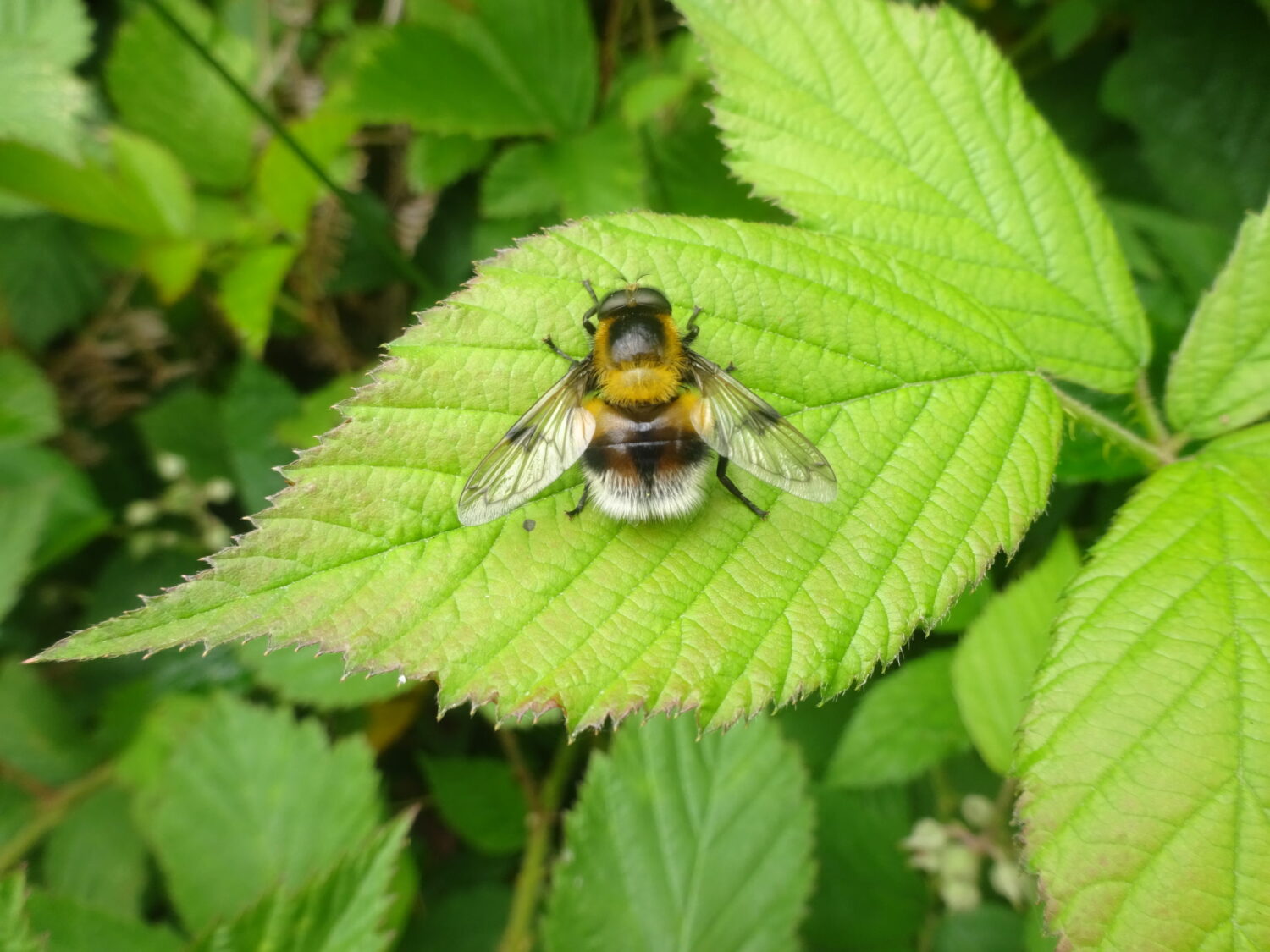
The Bumblebee Hoverfly Volucella bombylans
This species is the finest of the bumblebee mimics with a dense furry coat. It occurs in two common forms: a white-tailed form and a red-tailed form that resembles the Red-tailed bumblebee. The larvae in fact develop inside bumblebee nests and feed upon the debris. This is a common species active from May until September and can be seen visiting a wide range of flowers. Males are highly territorial, spending their days defending their perch and searching for potential mates.
This species is the finest of the bumblebee mimics with a dense furry coat. It occurs in two common forms: a white-tailed form and a red-tailed form that resembles the Red-tailed bumblebee. The larvae in fact develop inside bumblebee nests and feed upon the debris. This is a common species active from May until September and can be seen visiting a wide range of flowers. Males are highly territorial, spending their days defending their perch and searching for potential mates.
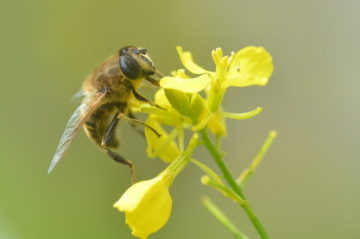
The Common Dronefly Eristalis tenax
This large honeybee mimic can be found feeding on flowers throughout the year. It becomes particularly abundant later in summer and can be found in large numbers on Ivy. The hind legs are distinctly enlarged and when in flight, the hind legs dangle like that of a honeybee. It is one of the few hoverflies to overwinter as an adult and can be active on particularly mild winter days. The rat-tailed larvae develop in highly-enriched pools and ditches.
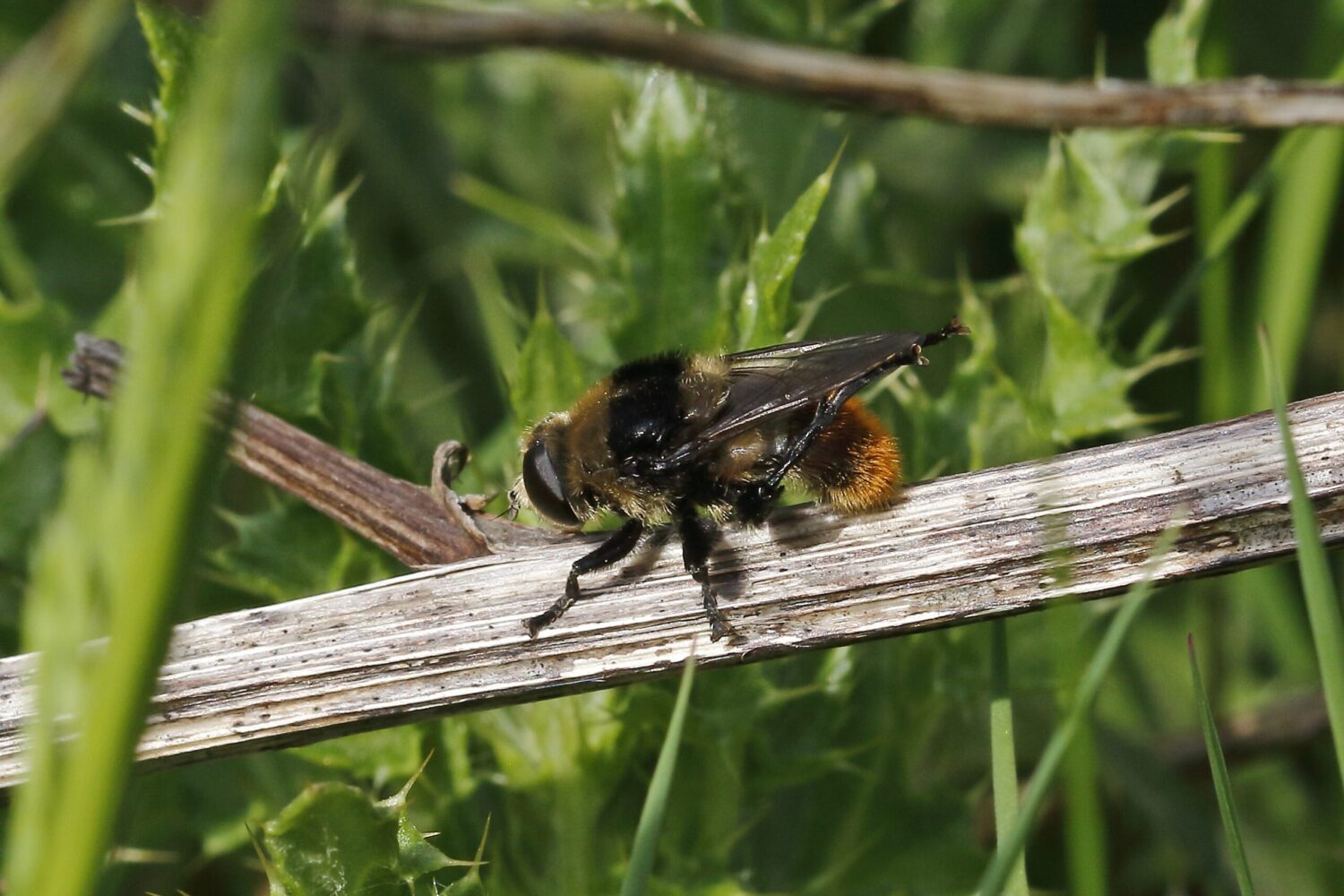
Narcissus Bulb Fly Merodon equestris
This bumblebee mimic has at least four different colour forms including a multi-banded and a completely ginger coat. As its common name suggests, the larvae develop in a wide variety of bulbs but particularly those of daffodils. It is believed to have arrived in Britain in daffodil bulbs from Europe during the 19th century. This species can is on the wing from April to September and can be found feeding on a variety of flowers. It is not as frequently recorded in the North East but can be found in gardens and urban areas.
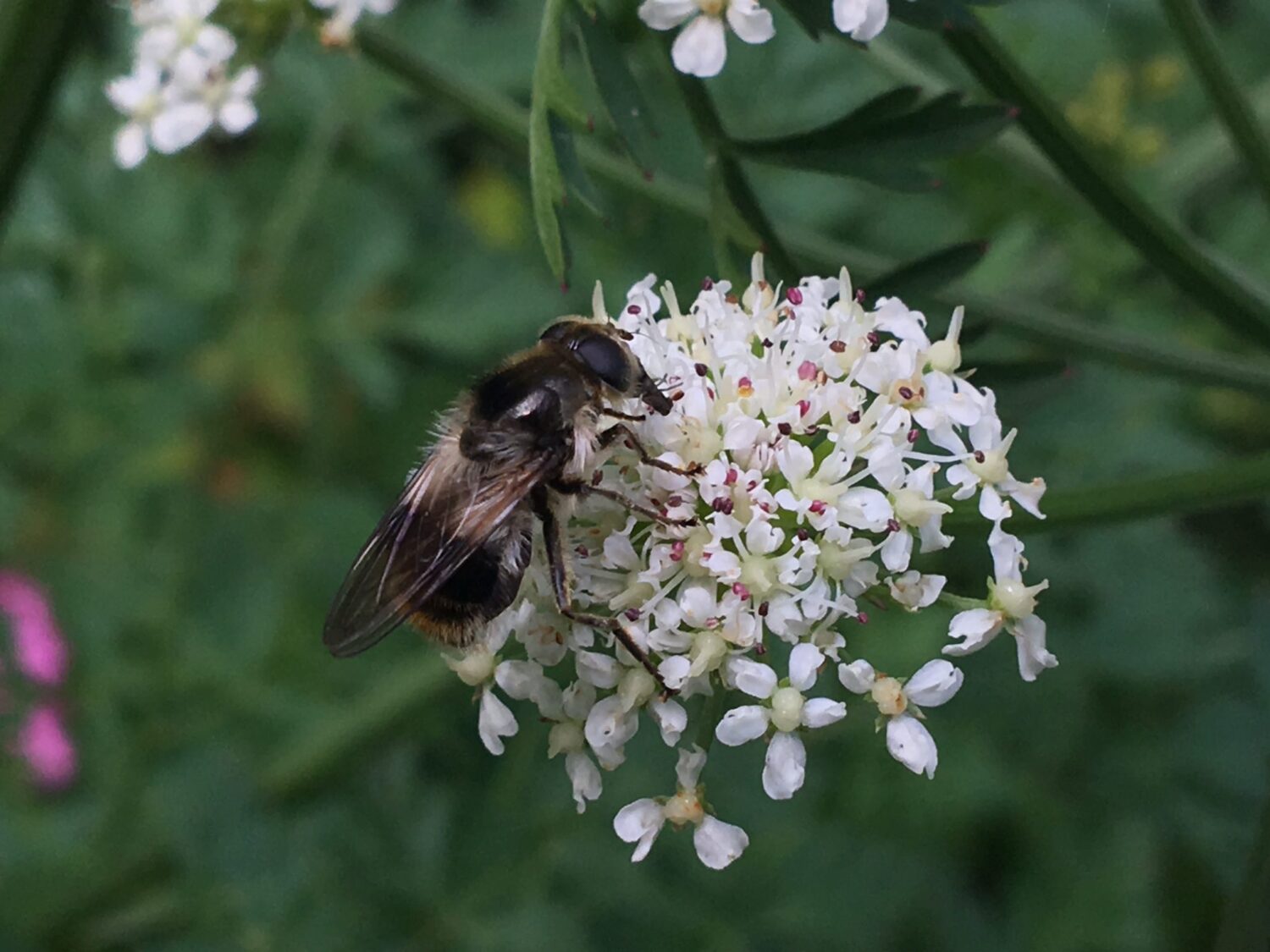
Cheilosia illustrata
This species is another bumblebee mimic, albeit a rather unconvincing one! This species is associated with umbellifer-rich habitats, particularly where there is Hogweed. The larvae develop within the roots and stems of Hogweed and adults feed on the flowers. This species can be seen on the wing from May through to August.
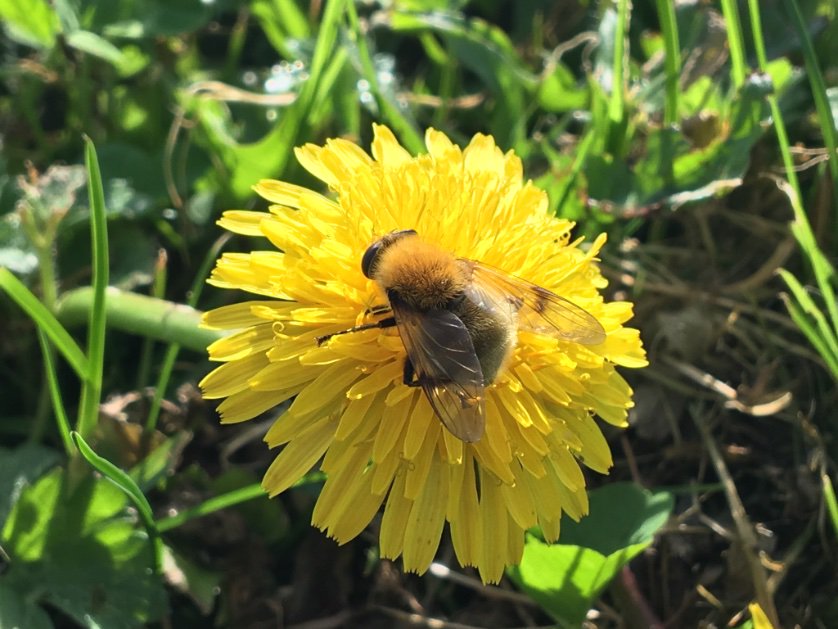
Sericomyia superbiens
A less common species in the North East, Sericomyia superbiens is a striking bumblebee mimic that resembles the gingery Carder bumblebees. It is on the wing late in the year, peaking in late summer and autumn. This species is associated with damp meadows, where it tends to visit flowers such as knapweed and Devil’s-bit scabious. The larvae develop in peaty pools and ditches.
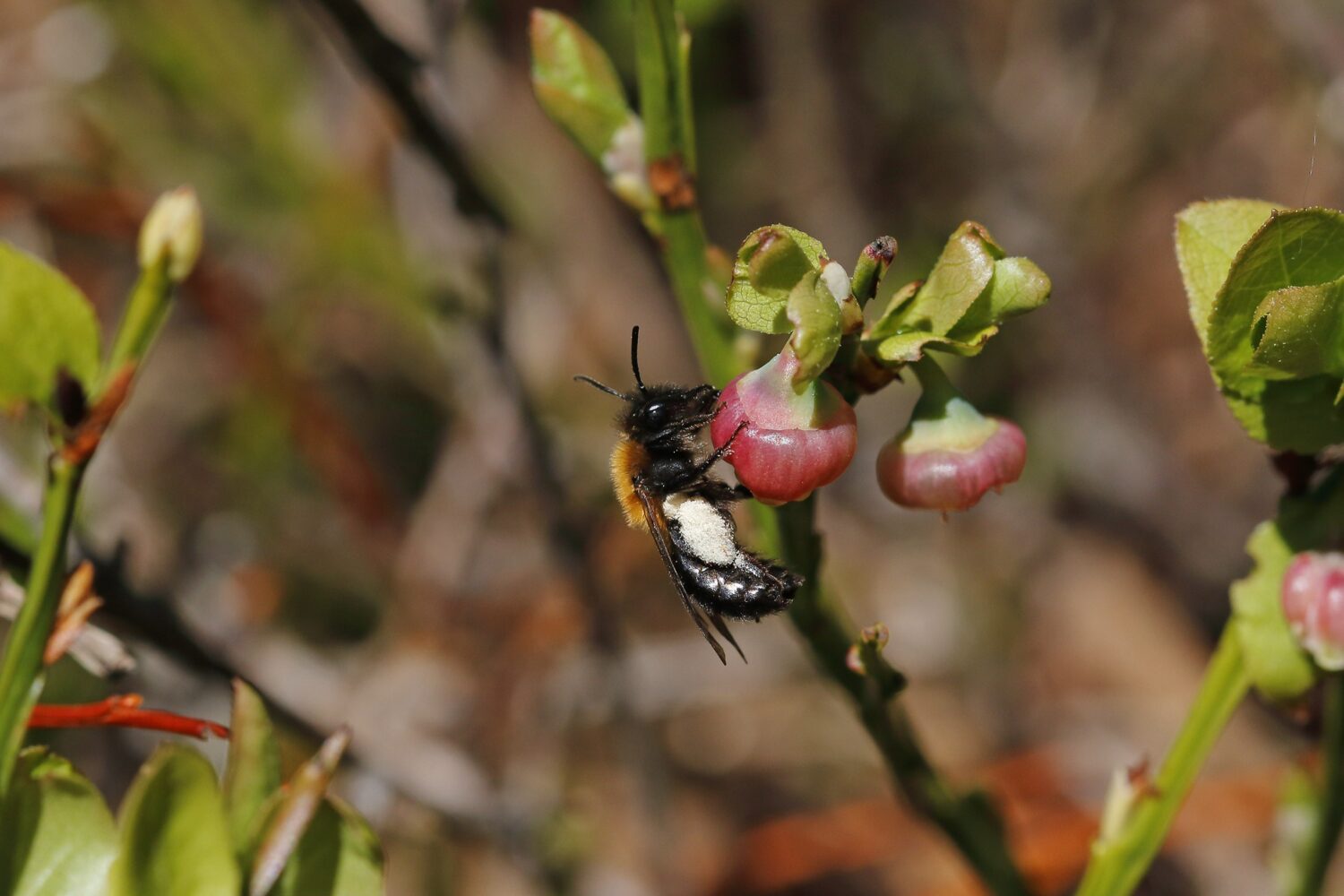
Join the North East Bee Hunt
Urban or rural, beginner or expert, we need your help to record eight distinctive bees across the North East this spring and summer.
Your records can add to our understanding of bees in the region and inform conservation and monitoring efforts.
Taking part is easy and every record counts, wherever you live in the region. Records of all bee species are encouraged.